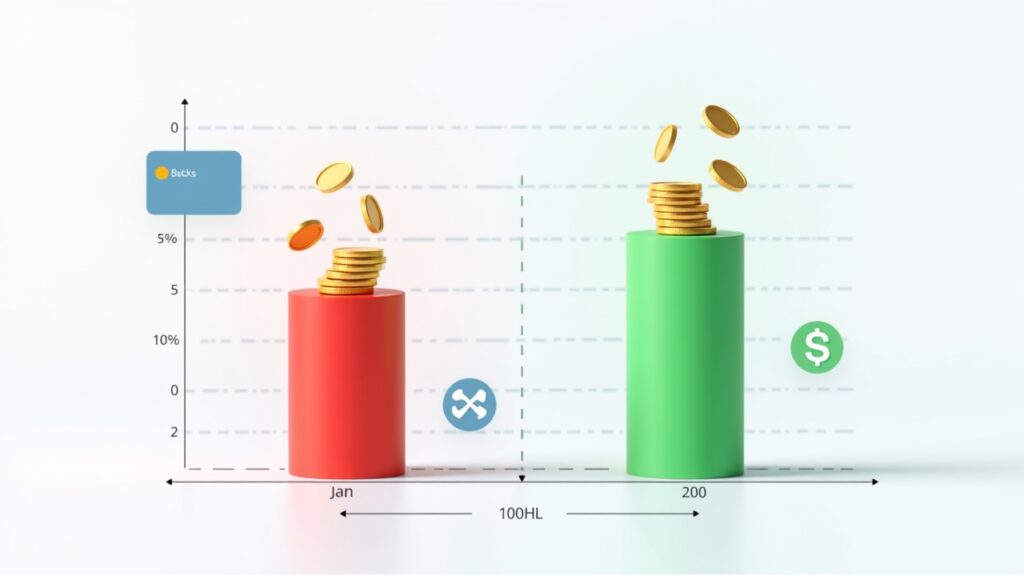Advertisements
Did you know that making only minimum payments on a $5,000 credit card balance could take you over 30 years to pay off? Yeah, I learned that the hard way! When I first discovered what a minimum payment calculator could really show me, it felt like someone had turned on the lights in a dark room.
Let me tell you, understanding how minimum payments work on credit cards is crucial for anyone who’s ever swiped that plastic. Actually, I used to think paying the minimum was being responsible – boy, was I wrong! These calculators basically show you the true cost of paying just the minimum amount due on your credit card each month.
What Exactly Is a Minimum Payment Calculator?

So, a minimum payment calculator is this nifty tool that shows you how long it’ll take to pay off your credit card debt if you only make minimum payments. Moreover, it reveals how much interest you’ll fork over during that time. Trust me, the numbers can be shocking!
When I first used one of these calculators, I nearly fell off my chair. Furthermore, I discovered that my seemingly manageable $3,000 balance would cost me almost $2,500 in interest. That’s practically double what I originally spent!
These calculators typically need just a few pieces of info: your current balance, interest rate (APR), and minimum payment percentage. Then, boom – they show you the harsh reality of minimum payment debt.
My Wake-Up Call with Credit Card Debt
Back in my late twenties, I thought I was doing fine with my finances. However, I had this nasty habit of paying just the minimum on my cards. One day, a coworker mentioned how she’d used a Bankrate minimum payment calculator, and it changed her whole perspective.
Naturally, I was curious and decided to check it out myself. Additionally, I plugged in my numbers: $4,500 balance, 18.99% APR, and 2% minimum payment. The results? It would take me 27 years to pay it off, and I’d pay over $6,000 in interest!
That moment was terrifying but necessary. Consequently, I realized I’d been basically throwing money into a bottomless pit. From then on, I became obsessed with understanding how credit card payments really work.
How to Use a Minimum Payment Calculator Effectively
Using these calculators is super easy, but there’s definitely a right way to do it. First off, you gotta gather your credit card statements. Subsequently, look for your current balance and APR – these are the big ones.
Most calculators, like the one from CreditCards.com, also ask for your minimum payment amount or percentage. Generally, credit cards require 1-3% of your balance as the minimum. Although some cards calculate it differently, adding fees and interest to a base percentage.
Here’s a pro tip I learned: run multiple scenarios! Therefore, try different payment amounts to see how much time and money you can save. Even adding just $20 or $50 to your minimum payment makes a huge difference.
The Hidden Costs Nobody Talks About
What really gets me is how credit card companies don’t make this stuff obvious. Nevertheless, they’re required to show you on your statement how long it’ll take to pay off your balance with minimum payments. But honestly, who reads the fine print?
The real kicker is compound interest. Basically, you’re paying interest on your interest, which is why balances seem to barely budge. I remember making a $90 minimum payment once, and only $15 went toward my actual balance!
Additionally, if you miss a payment or go over your limit, fees get added to your balance. Then guess what? You’re paying interest on those fees too. It’s a vicious cycle that these calculators help you visualize.
Smart Strategies Beyond Minimum Payments
After my calculator wake-up call, I developed some strategies that really worked. Firstly, I started paying double the minimum on all my cards. Sure, it was tight for a few months, but the progress was motivating!
Another trick I learned was the avalanche method. Essentially, you pay minimums on all cards except the one with the highest interest rate. Then, you throw every extra penny at that high-interest card until it’s gone.
Balance transfer cards became my best friend too. However, you gotta be careful with these – the promotional rates don’t last forever. But transferring a high-interest balance to a 0% APR card gave me breathing room to actually make progress.
Tools and Resources That Actually Help

Besides basic calculators, there’s tons of helpful tools out there. For instance, Unbury.me lets you compare different payoff strategies. It’s been a game-changer for visualizing debt payoff timelines.
Mobile apps have made tracking even easier. Furthermore, many banks now include payoff calculators right in their apps. Some even send alerts when you’re only paying the minimum, which is a nice reality check.
Don’t forget about debt payoff planners either. These go beyond simple calculations and help you create an actual strategy. They consider multiple debts and help prioritize which to tackle first.
Look, I get it – seeing those calculator results can be overwhelming. Nevertheless, knowledge is power, and now you know what you’re up against. The most important thing is to start somewhere, even if it’s just adding $10 to your minimum payment.
Remember, every extra dollar you pay goes directly to your principal balance. Therefore, you’re not just saving on interest – you’re buying back years of your financial life. That’s not an exaggeration; it’s literally what happened to me.
If you found this helpful, there’s plenty more financial wisdom waiting for you at Clear Cents. Check out our other posts on budgeting, saving strategies, and getting your money life together. Because honestly, we all deserve to understand our finances without the confusing jargon!




[…] debt. Knowledge is power, friend! And hey, if you found this helpful, Clear Cents has tons more real-talk articles about getting your money life together. We’re all in this journey […]